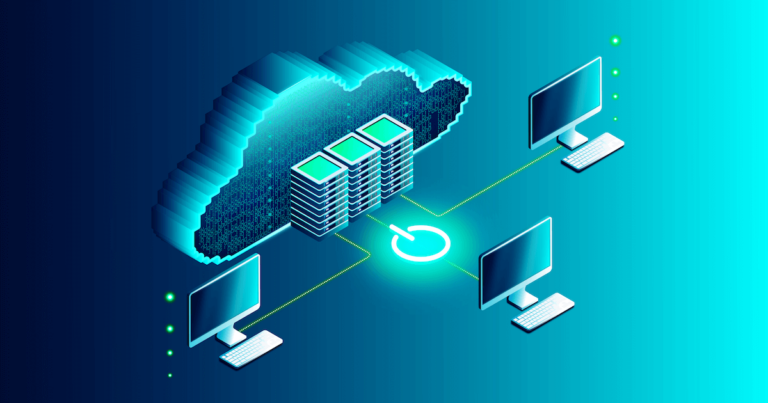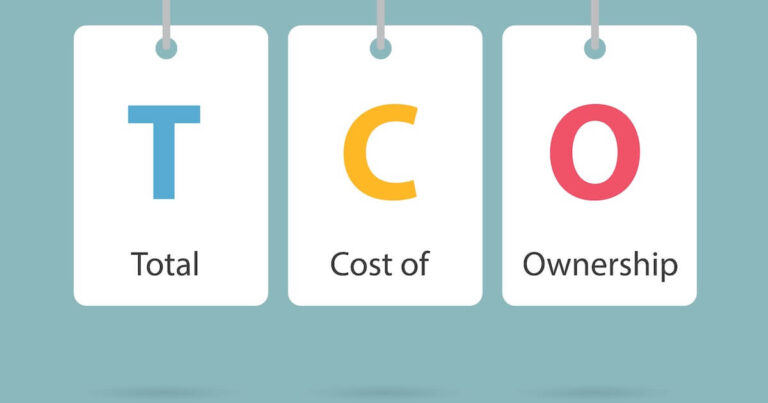Amazon Web Services (AWS) ecosystem has more than 200 fully-featured services and is served to more than 190 countries with scalable, reliable, and low-cost infrastructure. EC2 stacks and serverless platforms are the two most critical services you should become familiar with.
If you are using Amazon Web Services, it is likely that you must be currently using at least one of these core AWS services for your applications. The benefits these services provide may seem to overlap sometimes. But each service has unique capabilities and advantages over the other that you may want to use in different use cases based on requirements.
What is AWS EC2?
EC2 is a core compute component of the AWS technology stack. It makes life easier for developers by providing secure, and resizable compute capacity in the cloud. It comes with auto-scaling groups that allow EC2 instances to increase and decrease their computing power as needed and makes it a choice for organizations and developers over on-premises data centers to select to spin up virtually limitless VMs in the cloud.
EC2 instances add additional computing power to deal with growing traffic and support user experience while preventing service outages whenever your virtual CPU, RAM, and storage requirements approach their limits.
Unlike traditional virtual machines, you do not pay upfront money for setting up complete infrastructure that you used to do with on-premises infrastructure. EC2 is a cloud-based service and follows a pay-as-you-use model.
What is AWS Serverless?
As described by AWS, the term serverless was coined on the following tenets: no server management, continuous scaling, pay-for-value services, and built-in fault tolerance. Adopting a serverless approach allows developers to minimize undifferentiated work around managing servers, infrastructure, and the parts of the application that add less value to your customers. Serverless can make it easier to deliver new features in applications, release experiments, and improve the team’s delivery velocity. It is possible as you organize your code into functions. Lambda – a serverless service from AWS, helps you run your function only when required and scales automatically. It could scale a few requests per day to thousands per second as required.
Additionally, you pay only for compute time that is used, and no bill is generated when your code is not running.
It is performed as an event-driven service known as functions. Serverless is best for applications that need rapid, scalable, and efficient infrastructure to support fast growth. When you can’t predict how much server load an application might take, serverless architecture can be the most dynamic way to meet the rapid changes.
How Has Serverless Evolved Over EC2?
Cloud services have developed to a point where it makes sense to use them beyond data storage and server rentals. There are many more web services and tools that you can use to power your applications and ultimately make release cycles faster and build higher quality software. Let’s look at the basic differences between EC2 and AWS serverless service – Lambda to understand the paradigm shift in developing modern applications and how these are helping businesses generate value in terms of cost savings, staff productivity, and business agility.
| Criteria | EC2 | Lambda Function |
| Time out | EC2 is plagued by connection timeout due to overlapping security groups | AWS Lambda has the prescribed timeout of 300 seconds |
| Dependencies | AWS EC2 imposes no constraint to limit the number of dependencies | AWS Lambda constraints come in the form of the max. size of – 50 MB |
| Scalability and concurrency | EC2 puts businesses in full control of implementing the concurrency | AWS Lambda scales dynamically in response to the increased traffic |
| Availability | EC2 instances are up and running without the benefit of on-demand availability | Lambda charges for the amount of time functions are up and running |
1. Cost Savings
Underprovisioning And Overprovisioning: With EC2 instances, you are likely not always using 100% of the compute capacity. There are applications that require only 10-20% of the available capacity of their EC2 fleet at any point in time. If the resources are also provisioned for disaster recovery and fulfill high availability needs, it also typically results in idle servers waiting for traffic from failovers. Even in such scenarios, you pay the full amount of money for the resources that you are not using. AWS serverless services such as Lambda follow a compute model where you pay per request and by the duration of time. The serverless architecture further lowers the overall total cost of ownership since many of the networking, security, and DevOps management tasks are managed by CSP and included in the cost of service. Serverless is the answer to your two key operational risks associated with EC2: underprovisioning and overprovisioning. For EC2, you pay for seconds or on an hourly basis, whereas the serverless architecture pricing model counts based on volume and number of requests. Therefore, you can design the cloud architecture of your application with AWS service that best fits the application’s use case and optimize cloud cost significantly.
Technical Capabilities/Skills: EC2 provides you a cloud advantage where you trade your Capex to Opex. Still, you have to look after a whole host of operational challenges such as operating system patching, VM security, server maintenance, security, etc. It doesn’t eliminate the need for skilled IT and operations admin within a project. And top of it, if you have used EC2 instances of Ubuntu, you get regular OS updates periodically. Hence, you need staff with technical capabilities who can take care of manual provisioning of resources and can make a call about resources selected to ensure an uninterrupted customer experience for business app users. In this case scenario, you need to maintain talent within your firm for the project, which costs the company a good sum of expense. Since serverless uses capacity managed by AWS, you don’t need to worry about serverless architecture provisioning. Your application’s underlying infrastructure will remain healthy and secure as AWS does this for you.
2. Staff Productivity
No Idle Time: While you use infrastructure as code frameworks in your traditional practices for codifying and automating infrastructure requirements, it is a time-consuming job. Moreover, it’s better suited to big teams of cloud specialists who set up things for you. But when you are a solo developer or have a small team, it is just more of your time being taken away from building your product. In today’s competitive world, where you need to quickly release applications and new features, serverless offloads all the burden of cloud application development and deployment. You can quickly deploy new environments, and test applications in a truly production-compatible environment while working with technologies and tools you are comfortable with. Serverless eliminates idle time used to spend on undifferentiated heavy lifting with traditional infrastructure setup and frees you to focus on value creation for your customers. Now, you can only write the code that matters, and AWS serverless services let you get a new change up and running in minutes.
3. Business Agility
According to AWS, their customers have experienced 89% improvement in time to deploy new compute and 96% improvement in time to deploy new storage. In a current competitive world, businesses come up with something new every day, and then they want it to go live instantly. Businesses need to ensure a frictionless experience for developers so that they can spur innovation without affecting productivity and or system performance. With EC2, if a team has to develop applications, then they have to provision resources to do it. Going serverless allows developers to instantly provision resources and start writing code. Developers therefore, take a very fresh opportunity to build and launch products or new features to market before competitors, quickly expanding to new geographies and enabling business agility.
4. Third-Party Independent Software Vendor (ISV) Support
EC2, being older than a decade, supports a high degree of integration for third-party ISVs. The number of commercial off-the-shelf applications that can be run on Elastic Compute Cloud is higher, making it still a choice among companies. Serverless computing has started getting traction recently, hence having a low degree of support for third-party applications.
5. Operational Control
With Elastic Cloud Compute, developers experience a high degree of operational control over the runtime environment, although it comes with a lot of operational overhead. Serverless uses the Functions As A Service execution model, abstracting away the choice and flexibility. But it results in faster setup time with low operational overhead.
6. Application Architecture
EC2 is best suited for monolithic three-tier applications and porting legacy applications to the cloud. On the other hand, serverless is considered best for a new development of back-end services supporting web and mobile apps and event-driven functions and processes.
7. Statefulness
If you are using stateful applications such as MongoDB, Cassandra, and MYSQL databases, it all requires some type of persistent storage to enable service restarts. EC2 allows backing storage of stateful applications. AWS Lambda, however, follows stateless functions as it allows to rapidly launch as many copies of the function as needed and scale to the rate of incoming events. Although AWS Lambda’s programming model is stateless, it can still access stateful data by calling services from other storage services such as Amazon S3 or Amazon DynamoDB.
Hybrid Architecture, Operational Overhead, Workload Longevity, and Skills Availability are other differentiating factors between Elastic Cloud Compute and Serverless.
Final Thought
Though AWS has launched several serverless platforms, they also continue supporting its traditional compute solution i.e., EC2. EC2 still has many different use cases like when a project requires high-performance computing, disaster recovery solution, or easy DevOps processes. AWS serverless service such as Lambda however has proven their worth in case scenarios such as shorter execution time, infrequent traffic, scheduled cron jobs, real-time processing, etc.
Therefore, based on a business use-cases and cost optimization strategy, developers and vendors can choose the most appropriate technology stack to drive value for business.




